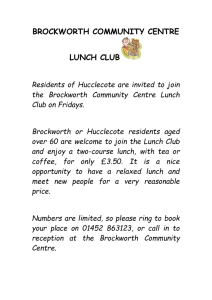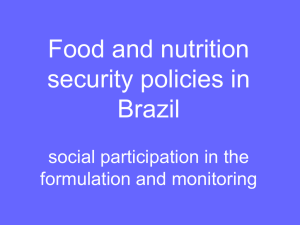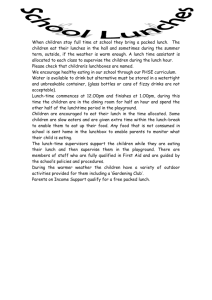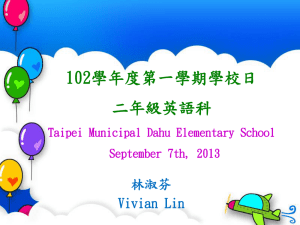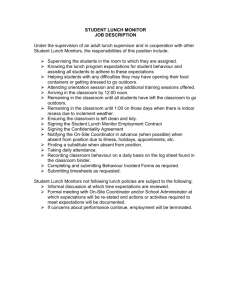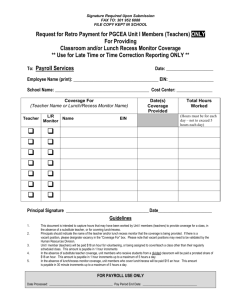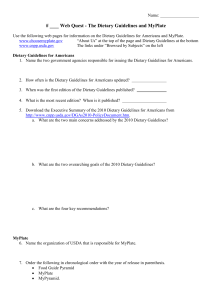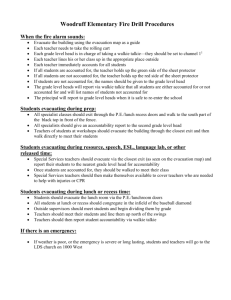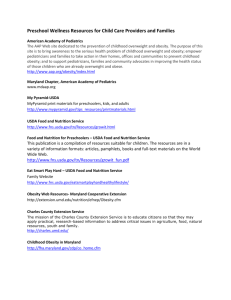Communities Creating Health Environments Taking on School
advertisement
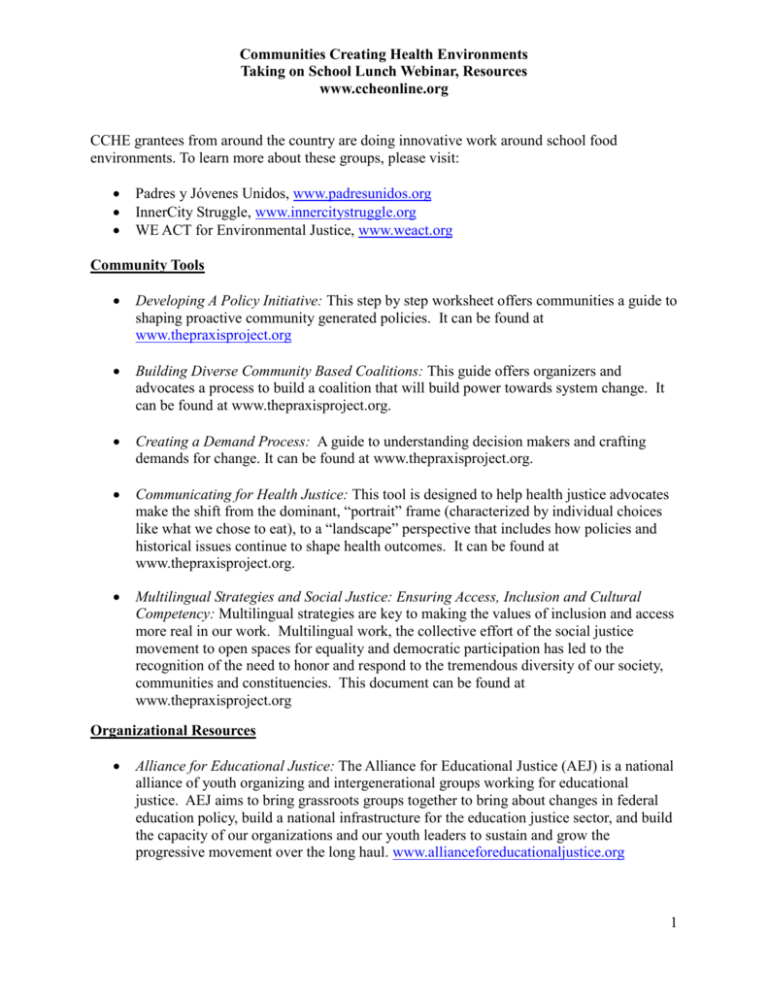
Communities Creating Health Environments Taking on School Lunch Webinar, Resources www.ccheonline.org CCHE grantees from around the country are doing innovative work around school food environments. To learn more about these groups, please visit: Padres y Jóvenes Unidos, www.padresunidos.org InnerCity Struggle, www.innercitystruggle.org WE ACT for Environmental Justice, www.weact.org Community Tools Developing A Policy Initiative: This step by step worksheet offers communities a guide to shaping proactive community generated policies. It can be found at www.thepraxisproject.org Building Diverse Community Based Coalitions: This guide offers organizers and advocates a process to build a coalition that will build power towards system change. It can be found at www.thepraxisproject.org. Creating a Demand Process: A guide to understanding decision makers and crafting demands for change. It can be found at www.thepraxisproject.org. Communicating for Health Justice: This tool is designed to help health justice advocates make the shift from the dominant, “portrait” frame (characterized by individual choices like what we chose to eat), to a “landscape” perspective that includes how policies and historical issues continue to shape health outcomes. It can be found at www.thepraxisproject.org. Multilingual Strategies and Social Justice: Ensuring Access, Inclusion and Cultural Competency: Multilingual strategies are key to making the values of inclusion and access more real in our work. Multilingual work, the collective effort of the social justice movement to open spaces for equality and democratic participation has led to the recognition of the need to honor and respond to the tremendous diversity of our society, communities and constituencies. This document can be found at www.thepraxisproject.org Organizational Resources Alliance for Educational Justice: The Alliance for Educational Justice (AEJ) is a national alliance of youth organizing and intergenerational groups working for educational justice. AEJ aims to bring grassroots groups together to bring about changes in federal education policy, build a national infrastructure for the education justice sector, and build the capacity of our organizations and our youth leaders to sustain and grow the progressive movement over the long haul. www.allianceforeducationaljustice.org 1 Communities Creating Health Environments Taking on School Lunch Webinar, Resources www.ccheonline.org Colectivo Flatlander: Colectivo Flatlander helps build a stronger popular movement for social, economic and racial justice in the South and Southwest by working with communities and organizations who are engaged in these struggles. Founded in 2002 by immigrant and Chicano organizers who sought to provide grassroots immigrant rights groups and organizers with tools, political analysis, training opportunities and spaces for dialogue that modeled popular education principles. www.colectivoflatlander.org Strategic Concepts in Organizing and Policy Education: Strategic Concepts in Organizing and Policy Education (SCOPE) builds grassroots power to eliminate the structural barriers to social and economic opportunities for poor and disenfranchised communities. SCOPE combines community organizing, leadership development, strategic alliance building, research, training and capacity building, and policy advocacy to pursue its mission at the local, state and national levels. More information can be found at www.scopela.org General Resources 2010 State Plan: Colorado Physical Activity and Nutrition Coalition and the Colorado Department of Public Health and Environment produced a 2010 State Plan that identified Recess before Lunch (RBL) as a key strategy they want districts to implement. (http://www.cdphe.state.co.us/pp/copan/2004stateplan.pdf ) Recess before Lunch: The state of Montana has passed the most notable policy on Recess before Lunch. They have created a 28-slide, power point resource mapping out their entire methodology in implementing RBL. It can be found at www.opi.state.mt.us/schoolfood/index.html. USDA Farm to School Grants: You can receive updates directly by subscribing to the USDA Farm to School mailing list or by visiting the Farm to School website. For more information contact Deborah Kane, National Director, Farm to School Program, Food & Nutrition Services (FNS): deborah.kane@fns.usda.gov or 503.326.2010 or Gregory Walton, Grants Management Specialist, FNS: greg.walton@fns.usda.gov or 703.305.1575. 2


